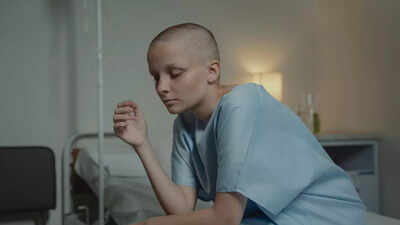ARTICLE AD BOX

Chemotherapy is one of the most widely used treatments against cancer, but it often brings challenging side effects—hair loss being among the most visible and distressing. According to the 2019 multicenter survey published in PLOS ONE, “A multicenter survey of temporal changes in chemotherapy‑induced hair loss in breast cancer patients,” nearly 99.9% of participants experienced hair loss after starting chemotherapy, typically beginning around 18 days into treatment.
The good news is that hair regrowth generally starts within a few months after therapy ends. However, the new hair may differ in texture, thickness, or colour, and the pace of recovery varies.
Understanding these changes helps patients prepare emotionally during their cancer journey.
Hair loss onset during chemotherapy
Hair loss is almost universal in breast cancer patients receiving chemotherapy involving anthracyclines and/or taxanes. On average, noticeable shedding begins around 18 days after the first chemotherapy session, and this timeline is fairly consistent regardless of the type of chemotherapy regimen.
Hair loss often occurs rapidly, sometimes within a week of the first dose, and can affect not only the scalp but also eyebrows, eyelashes, and other body hair.
Patients may experience anxiety or distress due to the sudden change in appearance, making early information and support crucial.
When does hair begin to regrow
Scalp hair regrowth usually starts around 3.3 months after the completion of chemotherapy. Some patients may notice fine, downy hair appearing during treatment, but this is less common.
Regrowth tends to be gradual, initially soft and light in color. Full coverage of the scalp can take several months to a year. The timeline varies among individuals depending on factors such as age, chemotherapy type, and overall health.
Understanding that regrowth is a slow process can help patients set realistic expectations and reduce anxiety related to appearance.
Characteristics of regrown hair
The new hair may differ from pre-treatment hair in multiple ways. Six months after regrowth begins:
- Approximately 58% of patients report thinner hair compared with pre-treatment levels.
- Over 60% notice that hair becomes wavier, curlier, or even frizzier.
- About 38% see their hair color change to gray or white, although more than half observe no significant change.
- These changes are usually temporary, and hair often returns closer to its original texture and color over time. Patients may also notice variations in hair density across different areas of the scalp.
Rate and extent of hair recovery
Nearly all patients (98%) experience some degree of hair regrowth, though full restoration is not guaranteed for everyone.
Around 4% may have less than 30% scalp hair recovery even 2–5 years post-treatment. Hair recovery is usually fastest within the first year, after which growth may plateau. While most patients regain sufficient hair to feel comfortable without head coverings, some may need continued cosmetic support for a longer duration.
Monitoring progress helps healthcare providers identify any unusual patterns that may need attention.
Impact on eyebrows, eyelashes, and nails
Hair loss is not limited to the scalp. Over 80% of patients also experience eyebrow and eyelash shedding. Recovery for these areas generally reaches 60–70% by two years post-treatment. Nails are similarly affected, showing discoloration, ridging, or brittleness during and shortly after chemotherapy. Fortunately, over 80% of patients see significant nail recovery within two years. Understanding that multiple body areas can be affected allows patients to anticipate and manage these changes effectively.
Use of wigs and head coverings
Due to the sudden and visible nature of hair loss, 84% of patients initially rely on wigs or scarves. Wigs help restore confidence and provide a sense of normalcy during treatment. On average, wig usage lasts about 12.5 months, though some patients continue wearing them for several years, particularly if regrowth is slow or uneven. Choosing comfortable and realistic head coverings can make a significant difference in managing emotional stress associated with hair loss.Hair loss from chemotherapy is almost inevitable, but regrowth generally begins within a few months after treatment ends. Although new hair may initially differ in texture, thickness, and color, most patients achieve substantial recovery over time. A small percentage may experience long-term hair thinning or incomplete regrowth. Awareness of these timelines and patterns helps patients plan ahead, cope with appearance changes, and seek supportive measures such as wigs or scarves.
Being informed can significantly improve emotional resilience during the recovery process. Disclaimer: This article is for informational purposes only and does not constitute medical advice. Always consult a qualified healthcare professional before making any changes to your health routine or treatment.



.png)
.png)
.png)
















 2 hours ago
3
2 hours ago
3









 English (US) ·
English (US) ·